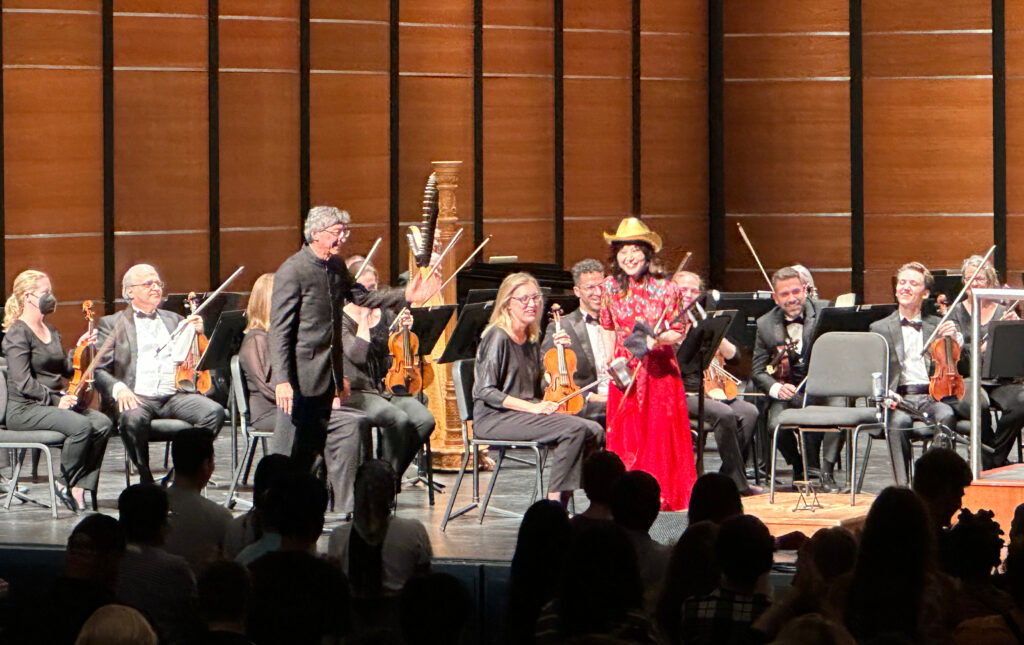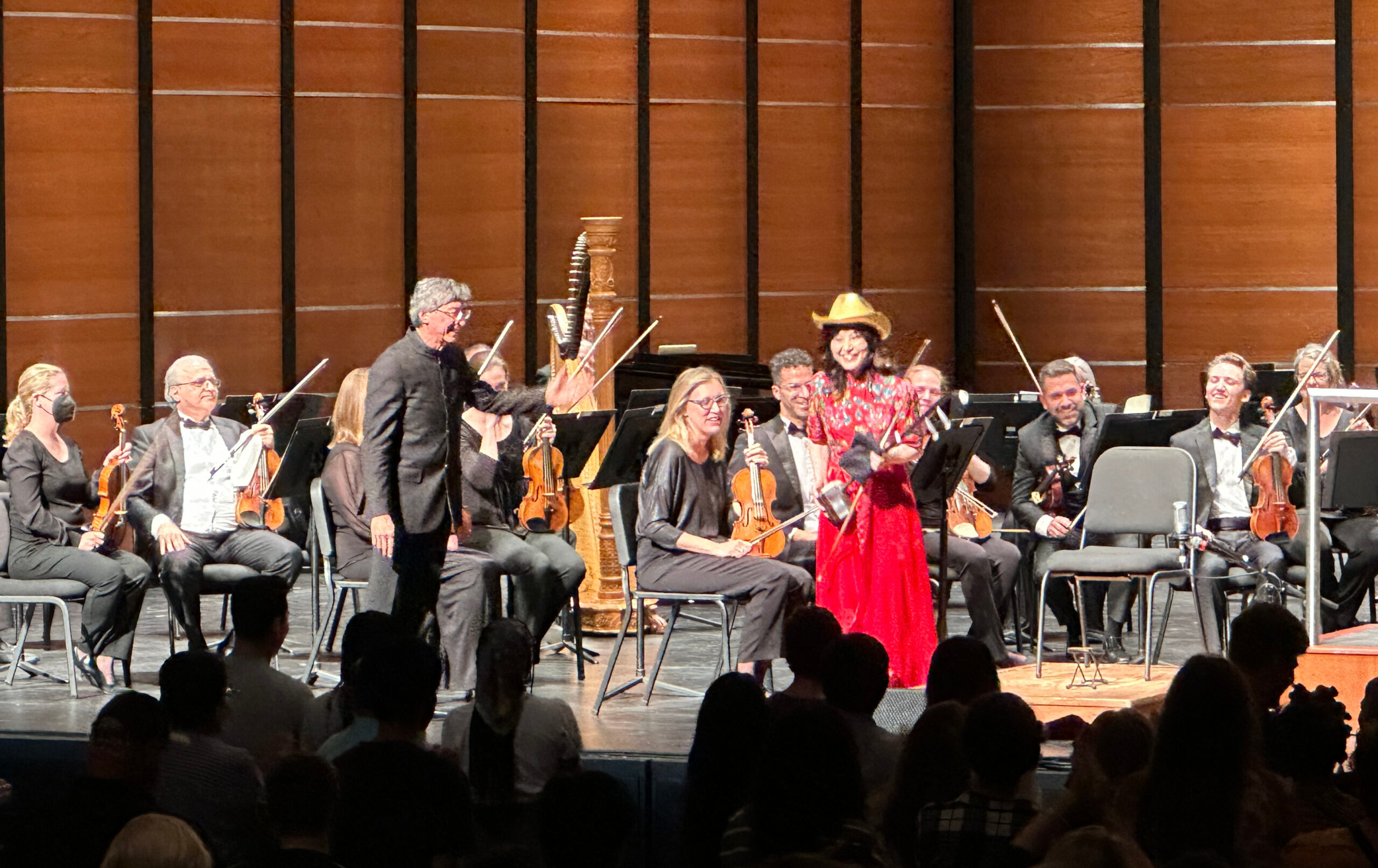For the first time ever, the Austin Symphony Orchestra featured the erhu. While the word is likely known to few readers, the sound it emits is at once recognizable as being the quintessential Chinese musical instrument. A 2-stringed bowed instrument, it merged seamlessly with the string section of the orchestra in the expert hands of Jiebing Chen.
Her biography in the printed programme covers an entire page. I will simply say that she tours the world playing the erhu, an instrument that was created a thousand years ago. A native of Shanghai, Chen earned an MA degree in Music Theory from the State University of New York in Buffalo and she is now a leader in East-West jazz fusion. She is shown in the photo wearing a golden Texan cowboy hat.
Her chosen piece of music was The Butterfly Lovers Concerto, based on a legend that dates to the ninth century. A typical boy-girl story ending with a scene straight out of a Halloween tale (when a grave splits apart and the girl , Zhu, jumps in to join her dead boyfriend, Liang). The single-movement work, written in 1959, opens with a beautiful lyric passage that celebrates their love. The work is imbued with tonal harmonies, but one note strains the upper register of what the erhu can deliver.
Luckily, the state police were not aware of the nature of the original story, otherwise they would have banned it along with the hundreds of books they have banned (in case you have forgotten, the Nazis famously burned books they didn’t like, starting in 1933). The reason for all this? Well, it turns out Liang did not know Zhu was a girl for the entire three years they were schoolmates as she disguised herself as a man. Cross-dressing is verboten!
Anyway, once Liang realizes Zhu is a girl, his love burns brightly. But Zhu’s parents have already decided on a husband for her, so Liang lapses into depression and death. The fates have another fate in mind for Zhu, as her wedding party is halted by whirlwinds that lead her to Liang’s grave. Romantically, two butterflies emerge from the tomb after she plunges into it. As stated in the notes at the end of the original score:
A rainbow shines and flowers flourish
Amid the flowers butterflies flutter
In pairs that never sever
The spirits of Liang and Zhu – never perish.
While it is difficult for a first-time listener to exactly pair the music with the tale, I was struck by brief, staccato notes on the erhu. The strings of the orchestra join in to emulate a highly emotional scene. Melancholy notes herald the metamorphosis of the lovers. The erhu assumes an ethereal quality that is surpassingly lovely. The instruments go silent as a gong sounds, followed by a fine romp from the brass section. I found the harp, in the hands of Elaine Barder, to be a key element in the performance. Its intervention presages a lovely melody.
The second half of the concert was a totally different experience, as we were treated to the greatest piece for strings ever written. Sheherazade, by Rimsky-Korsakov, dates from 1888. Like the Chinese composition, it is based on an old tale, in this case A Thousand Nights and One Night. It tells of a khalif who was fond of murdering his wives, but the wily Sheherazade was too smart for that fate. She spun out many tales that enthralled him, and eventually was spared. This symphonic composition is loosely based on some of her tales, such as The Festival of Baghdad and The Sea.
The music is comprised of four tableaux. Notable is the use of the English horn, which evokes the days of the troubadours. Like the Butterfly Lovers piece, one of the tableau here deals with a young man and woman. A serious melody from the violins kicks it off. This is extended by the other strings as the contemplative mood deepens. There is no trace of melancholy here, just a thoughtful exposition of emotion. A rat-a-tat-tat on the drums lightens the mood. The principal violin and the harp briefly duel for dominance, a rare and fine pairing of these two instruments with no intervention from any other part of the orchestra. The finale is characterized by a headlong gallop through a maelstrom of notes that is a true showcase for the strings. Combined with Chen’s encore number, Galloping War Horse, it made for a thrilling evening of great music.
This was the final main series concert of the season by Austin Symphony. The lineup for the next season has been announced. For tickets, visit www.austinsymphony.org

